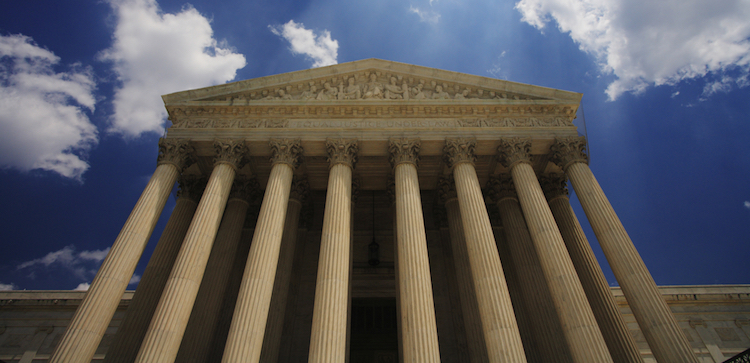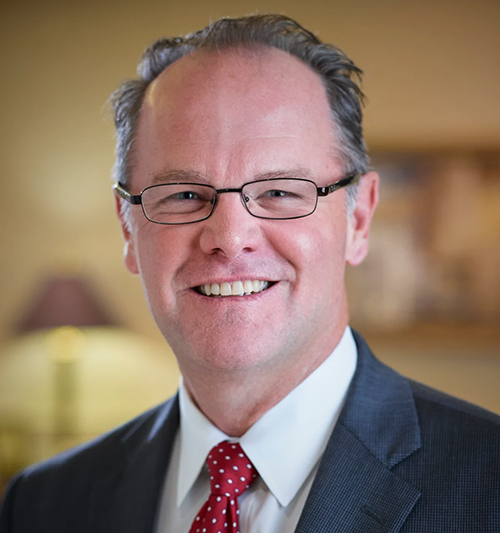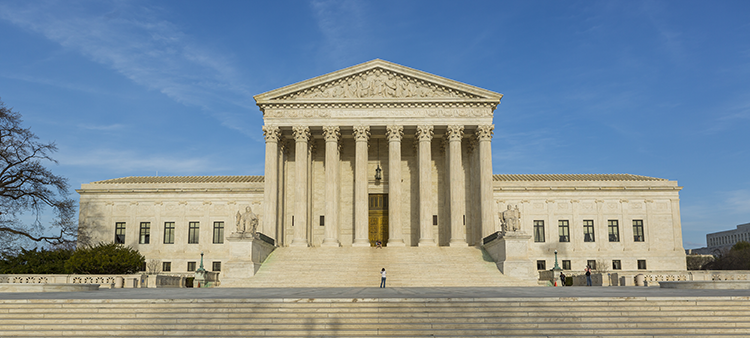SCOTUS abortion case complicates Breyer retirement speculation

Image from Shutterstock.com.
Speculation about whether U.S. Supreme Court Justice Stephen G. Breyer might retire at the end of this term had been running rampant among legal observers this spring when the court itself threw in a wrinkle.
The court announced on May 17 that it would take up a major abortion case next term, one that could lead to the reversal or undermining of Roe v. Wade, the 1973 decision declaring that women had a constitutional right to terminate their pregnancies before fetal viability.
As Breyer considers whether to step down during the first year in office of President Joe Biden, a Democrat, one question that may weigh on his mind is whether to stay and fight for a legacy that is partly his own and partly that of the late Justice Ruth Bader Ginsburg. Both justices were appointed by President Bill Clinton, another Democrat.
“Justice Breyer has to realize he is likely to be in dissent” in the new abortion case given the stronger conservative majority, says Christine Chabot, a distinguished scholar in residence at Loyola University School of Law in Chicago, who has studied retirement timing of the justices.
“How much does he value that role as a likely dissenting justice?” she says.
Breyer, who will turn 83 on Aug. 15, has been a stalwart vote for abortion rights and other progressive issues since he joined the court in 1994. He has been getting no shortage of outside counsel on whether to step down with a Democrat in the White House and the party controlling the Senate in the narrowest possible way, with 50 seats in its caucus and Vice President Kamala Harris breaking any ties.
Erwin Chemerinsky, the dean of the University of California at Berkeley, School of Law (and ABA Journal contributor) wrote in the Washington Post this month that Breyer should take a lesson from Ginsburg’s death last year and her replacement by President Donald Trump with Amy Coney Barrett, who is viewed as conservative on many issues. Ginsburg had resisted calls from liberals (including Chemerinsky) to retire during President Barack Obama’s administration.
“Breyer shouldn’t even wait for the 2022 midterms to retire,” Chemerinsky wrote in his Post op-ed essay. “With a 50-50 Senate, anything is possible: Something could happen to a Democratic Senator in a state with a Republican governor, who would then pick the replacement and throw the majority back to Republicans.”
Some progressive groups have been more direct. Demand Justice, a progressive group focused on the federal courts, in April sent a billboard truck to circle streets around the Supreme Court with the message: “Breyer, retire. It’s time for a Black woman Supreme Court justice. There’s no time to waste.”
Other observers have called for an end to the entreaties to Breyer to leave the court. Noah Feldman, a Harvard law professor who served as a law clerk to now-retired Justice David H. Souter, wrote in his Bloomberg News column recently that Breyer is well aware of the political landscape.
“He is the one of the great pragmatist justices ever to have sat on the Supreme Court, following in the footsteps of Justice Louis Brandeis,” Feldman said. “Breyer also knows Capitol Hill, having worked there three separate times: once on the Watergate investigation and twice for the Senate Judiciary Committee.”
The more the timing of his retirement is depicted as a partisan objective, the less Breyer will want to do it, Feldman wrote. “To be seen to retire ‘in order’ to let Biden pick his successor would betray Breyer’s own career-long objective of making decisions based on what is right for the country, not for one party,” he said.
Reading the clerk hiring tea leaves
Breyer himself, who is known for his loquaciousness at oral arguments and his frequent Zoom appearances during the pandemic, has had little to say about any intention to retire.
He told Slate magazine’s Dahlia Lithwick in an interview posted in December that: “I mean, eventually I’ll retire, sure I will. And it’s hard to know exactly when.”
In April, Breyer delivered a two-hour lecture at Harvard Law School that warned against proposals to expand the Supreme Court beyond the current nine justices and expressed his long-held concerns about public perceptions of the court as a partisan institution.
Labels such as “conservative” and “liberal” and a highly partisan confirmation process contribute to a view that “that Supreme Court justices are primarily political officials or ‘junior league’ politicians themselves rather than jurists,” Breyer said. “The justices tend to believe that differences among judges mostly reflect not politics but jurisprudential differences.”
The Harvard speech was viewed by some observers as a kind of end-of-career valedictory address, supporting the idea that Breyer was on the cusp of retirement. To others, the speech reinforced their belief that the justice would not be inclined to step down at a time when so many were calling for him to do so for partisan reasons.
“Breyer has been very clear he doesn’t want to see the court politicized,” Carrie Severino, the president of the conservative Judicial Crisis Network, said at a recent online forum of the Committee for Justice. “I feel this campaign [urging Breyer to retire] is very counterproductive for the people carrying it out.”
Some observers have been reading tea leaves or weighing practical considerations.
David Lat, the founder of the Original Jurisdiction newsletter on Substack, notes that with Ginsburg’s death, Breyer is now the most senior member of the court’s liberal bloc, which on occasion could bring the opportunity to assign the majority opinion in a divided case (assuming Chief Justice John G. Roberts Jr. or Justice Clarence Thomas, both of whom are senior to Breyer, are not in that majority.)
“He might want to enjoy that for a term or two,” Lat says.
Lat writes frequently about law clerk hiring by the justices, who are entitled to hire four clerks each. Breyer had hired two clerks early on for next term, and in April hired two more to fill out his slate. Clerk hiring can be a tricky measure when weighing retirement since not hiring any would give away the ending, while hiring a full slate is no guarantee against stepping down. (Justice Anthony M. Kennedy had hired a full slate for the 2018-19 term but retired in July 2018. By tradition at the court, those clerk hires got opportunities to serve in other chambers.)
Breyer’s decision in April to finish clerk hiring for next term “seems to me the actions of someone who wants to stick around,” Lat says.
Paul D. Clement, a partner with Kirkland & Ellis and former U.S. solicitor general under President George W. Bush, said recently that he wondered whether Breyer would want to step down after more than a year of telephone arguments and with the justices not taking their bench.
“It would be a shame to go out over the telephone,” Clement told an online forum for the International Municipal Lawyers Association. “He, like the rest of us, has to have missed kind of the interaction of being in the courtroom. I just wonder whether that might not play just the smallest amount in his mind.”
A key vote and voice in abortion cases
The court’s recent decision to grant review in Dobbs v. Jackson Women’s Health Organization has given hope to abortion opponents and alarmed advocates for abortion rights. The court will consider a Mississippi law that bar abortions after the 15th week of pregnancy, with limited exceptions. A federal district court held that the Supreme Court’s abortion precedents do not permit states to bar abortions before viability, which occurs around the 24th week of pregnancy.
The New Orleans-based 5th U.S. Circuit Court of Appeals upheld the district court, and the state filed its petition for a writ of certiorari in June 2020, when Ginsburg was still alive. The fact that the court granted review after the addition of Barrett, who has criticized Roe v. Wade, has led some observers to conclude that the more conservative court may be ready to overrule or diminish the landmark ruling.
Breyer has written the majority or plurality opinions in three major cases striking down state efforts to limit abortion rights.
“Millions of Americans believe that life begins at conception and consequently that an abortion is akin to causing the death of an innocent child; they recoil at the thought of a law that would permit it,” Breyer wrote for the court in Stenberg v. Carhart, a 2000 decision that invalidated a Nebraska law barring what the state termed “partial-birth abortion.”
“Other millions fear that a law that forbids abortion would condemn many American women to lives that lack dignity,” he wrote, “depriving them of equal liberty and leading those with least resources to undergo illegal abortions with the attendant risks of death and suffering.”
Breyer is one of only three members left in the court’s liberal bloc, with Justices Sonia Sotomayor and Elena Kagan being reliable votes for abortion rights. Thus, Breyer is hardly a swing vote on the issue. But he may see value in being around to hear the Mississippi case.
Breyer’s Harvard speech took note of the fact that the court’s liberals had achieved some surprise victories on hot-button issues in recent years by attracting a vote or two from more conservative members.
“The present court is often described as having a ‘conservative’ majority,” Breyer said. “But the court did not hear or decide cases that affected the political disagreements arising out of the 2020 election. It did uphold the constitutionality of Obamacare, the health care program favored by liberals. It did re-affirm precedents that favored a woman’s right to an abortion. It did find unlawful certain immigration, census, and other orders, rules or regulations, favored by a conservative president.”



